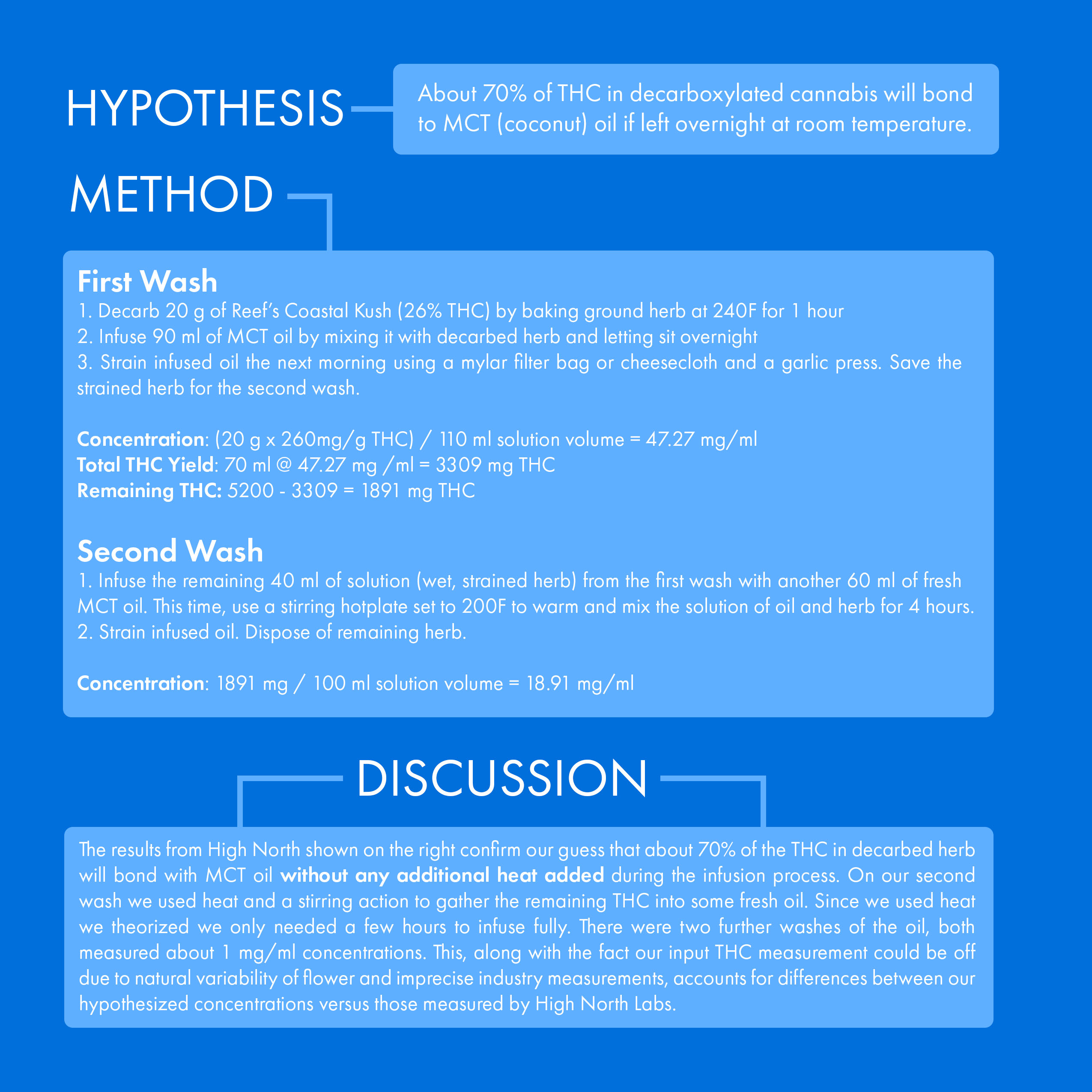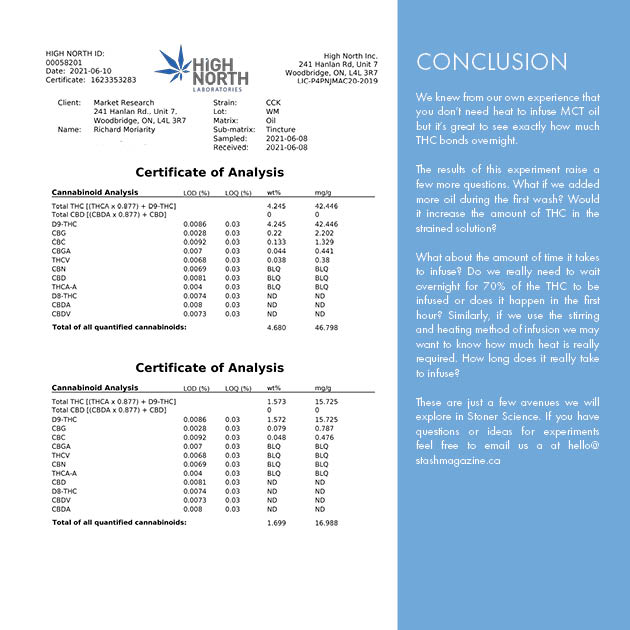This story first appeared in Volume 3. Read the whole issue here.
As a legacy grower and hashmaker, Rick Moriarity has heard his fair share of cannabis lore posing as science over the years. Now, as the Chief Operating Officer of Canada’s premiere cannabis testing laboratory he finally has the tools to test them.
“There’s no real truth, no real science behind these stoner theories,” Moriarity says. “It’s very cool to finally be able to explore some of them.”
Although the current workload at High North Laboratories is enormous (and constantly growing) Moriarity and his team often partner with other researchers to help lay the groundwork for the future of cannabis science. The best example of this is their work with the Trichome Research Initiative (TRI).
Created by the late Frenchy Cannoli (Didier Camilleri) the TRI is a partnership between the Frenchy Cannoli Brand, Lachlan Cheng of Cannibinerd and High North Labs to examine how cannabinoids and other metabolic compounds in cannabis resin change over time.
“We stand at a point in history similar to the wine industry in the late 1800s,” Cannoli wrote when announcing the initiative. “Good wines were made, but the great wines we enjoy today would never have been created without the discovery and understanding of the fermentation process.”
One of the first observations made in the study tossed an old stoner theory out the window: consuming old weed makes you sleepy. The theory goes that over time the THC in your herb degrades into CBN, another cannabinoid known for its sedative properties. After six months of accelerated aging using lighting and oxygen Moriarity got a big surprise.
“There was zero CBN created,” he says. “I would like to do a further study that’s at least a year, if not two years, where we’re aging and checking the stability and not in an accelerated fashion either. Just in a regular room with temperature fluctuations and darkness.”
With the passing of Frenchy Cannoli this past year the group’s efforts have been paused out of respect for him and his loved ones.
“Frenchy was a passionate pioneer of cannabis. His love for quality grown flower and what can be done with its resin was seen in any interaction with him. The experience from his travels and openness to newer technology that still prioritizes quality was great to see. We want to continue working with Mme Cannoli to carry on his legacy and continue researching certain theories—whether its ageing hash to different terroirs or something else—it would be an honour to help confirm some of Frenchy’s theories.”
When asked what sets High North apart from other labs Moriarity takes a deep breath. He describes an industry where spreadsheets are paid for by people who don’t know what they’re looking for and produced by people who’ve never lit a joint in their life.
“We only specialize in cannabis,” he says. “The other labs are all run by scientists and not cannabis guys. Some of our employees have never seen or touched cannabis. They’ve never smoked it. I provide them with a basic cannabis education so they can understand the history, the effects. It’s very basic but I think it’s important they understand what they’re working with.”
In addition to educating High North’s employees and mythbusting stoner theories Moriarity uses his unique knowledge of cannabis cultivation to help his clients improve their products.
“We can give advice,” he says. “When we get a CoA (certificate of analysis) we can help explain what it means. We actually keep an eye on trending and how changes in post harvest affect results.”
One of the biggest issues with cannabis testing is the inherent variety and diversity of the plant even when they’re clones of one another. Terpene levels ‘drift’ depending on where a plant is inside a grow room. Even on the same plant a bud from the bottom of a branch will have as much as a 5% difference in THC levels when compared to a bud from elsewhere on the plant. The number you see on the side of your new eighth is a precise measurement of the sample the lab received but it’s probably not exactly the THC level inside your jar due to variations between buds. This is partially why budtenders and other cannabis educators push consumers away from focusing on THC the way alcohol consumers focus on alcohol content.
Another theory Moriarity is keen to break down is one that’s got a perverse stranglehold on the cannabis industry: irradiating weed makes it safe to smoke.
“The biggest misconception with irradiation is that it means sterilization. It 100% does not mean sterilization,” Moriarity says. “That’s their goal but it does not always do that. There needs to be more research on this specific to cannabis instead of comparing research to food or other industries. There should be changes to how Health Canada regulates the testing of cannabis for microbial contaminants as well. It should be based on cannabis rather than a non-related pharmacopeia.”
Radiation doesn’t always have an effect on bacteria or cannabinoids but it does have a noticeable impact on terpene levels, moisture content and bag appeal.
“We’ve done studies and we feel that irradiation is not the way to go. There are a lot of beneficial microbes on a cannabis plant, “ Moriarity says. “If the lab is culturing on a plate for microbial testing and it’s healthy stuff and it shows the strength and quality of that plant why would we fail it? Cannabis is a natural plant that has healthy bacteria.”
It’s just another symptom of commercializing cannabis: treating it like food or alcohol.
“It’s really unfortunate,” Moriarity says, “most of the buyers have these strict regulations that are, in my opinion, not based on quality but rather a CoA with greater than 20% THC.”
In response to these issues High North developed a new scoring algorithm. The algorithm compares flower based on a number of factors, including the concentrations of more metabolites like CBD and CBN, giving them greater insight into the quality of a product. Although Moriarity is quick to point out that product quality does not always equal consumer satisfaction (everyone’s endocannabinoid system is different) his scoring system is far superior to what industry buyers use today to make decisions.
All Moriarity can do, along with many other legacy folks, is patiently build the datasets to support his lived experience, educate where possible and push the cannabis knowledge base forward.
Recently he leveraged his network of cannabis contacts and his love of golf to raise over $10,000 for Sick Kids Hospital in Toronto at the first annual High North Fore 20 Charity Golf Classic.
Besides the care Sick Kids has given his friend’s child over the years, Moriarity chose to fundraise for the hospital because they are also pushing forward cannabis research. Researchers at Sick Kids published a study in 2018 showing safe dosage limits of THC and CBD for children suffering from a rare form of epilepsy known as Dravet Syndrome. The report concludes “treatment resulted in a reduction in seizure counts, spike index on EEG and improved quality of life measures.”
High North Labs is Canada’s largest licensed facility exclusively focused on cannabis testing. With Moriarity’s influence they’ve also become a keystone in the long term success of the industry. Not only have they set the standard for client care, they also set a great example for what the cannabis industry can do for society at large.
“Our goal here is to be the best in Canada and provide as much education as we can to help improve the industry. As the LPs do well, so do we,” Moriarity says. “We’re here for cannabis only.”
Experiment #1
In this new series we partner with High North Labs to answer some burning questions. For our first experiment we decided to look at homemade edibles. Medium-chain triglyceride oil (MCT oil for short) happens to be one of the best human-consumable bases for making high powered edibles. The molecular structure of MCT oil, which is commonly derived from coconuts, binds easily with THC allowing edibles made with it to hit a higher potency.
But when infusing MCT oil with cannabis should we use heat? How much oil bonds with THC and how fast? Do we need to let it infuse overnight?
With some help from High North we decided to start our research with a simple question: How much THC bonds with MCT oil if left to infuse overnight without heat?


Conclusion
We knew from our own experience that you don’t need heat to infuse MCT oil but it’s great to see exactly how much THC bonds overnight.
The results of this experiment raise a few more questions. What if we added more oil during the first wash? Would it increase the amount of THC in the strained solution?
What about the amount of time it takes to infuse? Do we really need to wait overnight for 70% of the THC to be infused or does it happen in the first hour? Similarly, if we use the stirring and heating method of infusion we may want to know how much heat is really required. How long does it really take to infuse?
These are just a few avenues we will explore in Stoner Science. If you have questions or ideas for experiments feel free to comment them below.



